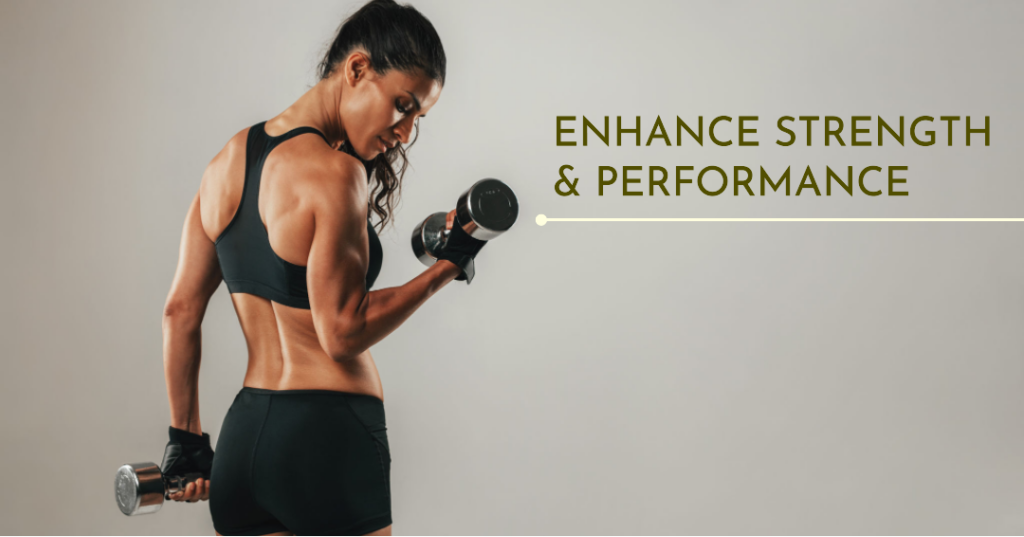| Outline of the Article |
|---|
| 1. Introduction |
| 2. Understanding Functional Fitness |
| 3. Benefits of Functional Fitness for Weightlifters |
| 4. Functional Movements for Strength and Performance |
| 5. Incorporating Functional Fitness into Weightlifting Training |
| 6. Importance of Mobility and Flexibility |
| 7. Core Strength and Stability |
| 8. Injury Prevention and Rehabilitation |
| 9. Nutrition and Recovery for Functional Fitness |
| 10. Monitoring Progress and Setting Goals |
| 11. Functional Fitness Equipment and Accessories |
| 12. Common Myths and Misconceptions |
| 13. Functional Fitness for Weightlifters: Success Stories |
| 14. Conclusion |
| 15. FAQs |
Introduction
In the world of weightlifting, athletes constantly seek ways to enhance their strength, improve performance, and achieve their fitness goals. One approach that has gained significant popularity is functional fitness. This article explores the concept of functional fitness and its benefits for weightlifters, providing valuable insights into how it can be incorporated into training routines.
Understanding Functional Fitness
Functional fitness refers to a training methodology that aims to improve an individual’s ability to perform everyday movements efficiently and safely. It focuses on exercises that mimic real-life activities, engaging multiple muscle groups simultaneously and enhancing overall strength, stability, and mobility.
Benefits of Functional Fitness for Weightlifters
Functional fitness offers several advantages for weightlifters. Firstly, it enhances overall strength by engaging multiple muscle groups in compound movements, promoting balanced muscle development and reducing the risk of muscle imbalances. Secondly, it improves athletic performance by enhancing power, speed, agility, and coordination, translating into more effective weightlifting techniques. Additionally, functional fitness helps prevent injuries by improving stability, balance, and proprioception, allowing weightlifters to maintain proper form and technique.
Functional Movements for Strength and Performance
Incorporating functional movements into weightlifting training can significantly enhance strength and performance. Exercises such as squats, deadlifts, lunges, and overhead presses engage multiple muscle groups and activate the core, promoting functional strength and stability. Implementing dynamic movements like kettlebell swings, medicine ball throws, and box jumps can further improve power, explosiveness, and athleticism.
Incorporating Functional Fitness into Weightlifting Training
To integrate functional fitness into weightlifting training, weightlifters can allocate specific training sessions or include functional exercises as part of their warm-up routines. Adding variations like single-leg squats, Bulgarian split squats, or Turkish get-ups can introduce functional challenges and stimulate muscle groups in different ways. It is important to gradually progress the difficulty and intensity of functional exercises to avoid overexertion and ensure proper adaptation.
Importance of Mobility and Flexibility
Mobility and flexibility play a crucial role in functional fitness for weightlifters. An adequate range of motion in joints allows for proper technique execution and prevents injuries. Incorporating exercises like hip openers, shoulder dislocations, and thoracic spine rotations can improve mobility and flexibility, facilitating efficient weightlifting movements. Regular stretching and foam rolling should also be included in the training routine to enhance recovery and maintain optimal joint health.
Core Strength and Stability
A strong and stable core is essential for weightlifters, as it provides a solid foundation for force transfer and protects the spine during heavy lifts. Functional fitness exercises like planks, Russian twists, and farmer’s carries effectively target the core muscles, promoting strength, stability, and postural control. By incorporating these exercises into their training regimen, weightlifters can enhance their lifting performance and reduce the risk of lower back injuries.
Injury Prevention and Rehabilitation
Functional fitness can serve as an effective tool for injury prevention and rehabilitation among weightlifters. By addressing muscle imbalances, improving stability, and correcting movement patterns, weightlifters can mitigate the risk of injuries and promote faster recovery. Exercises like single-leg balance work, band walks, and rotator cuff exercises can be beneficial for prehabilitation and rehabilitation purposes.
Nutrition and Recovery for Functional Fitness
Optimal nutrition and recovery strategies are vital components of functional fitness for weightlifters. A well-balanced diet that provides sufficient macronutrients, vitamins, and minerals is crucial for fueling workouts, supporting muscle growth, and facilitating recovery. Adequate hydration, quality sleep, and regular rest days are equally important for optimizing performance, preventing overtraining, and reducing the risk of injuries.
Monitoring Progress and Setting Goals
Tracking progress and setting goals are essential for weightlifters practicing functional fitness. Regular assessments of strength, endurance, and mobility can help identify areas that need improvement and guide training adjustments. Setting realistic short-term and long-term goals, such as increasing squat weight or improving flexibility, can provide motivation and a sense of achievement.
Functional Fitness Equipment and Accessories
Functional fitness for weightlifters can be enhanced with various equipment and accessories. Resistance bands, kettlebells, medicine balls, and suspension trainers offer versatile options for functional exercises. Weightlifting belts and wrist wraps can provide additional support during heavy lifts, while foam rollers and lacrosse balls aid in muscle recovery and myofascial release.
Common Myths and Misconceptions
Functional fitness is sometimes surrounded by myths and misconceptions. It is important to debunk these to fully understand its benefits and limitations. One common misconception is that functional fitness alone can replace weightlifting. While functional fitness can complement weightlifting, it should not replace it entirely, as weightlifting-specific exercises are essential for developing maximal strength and power.
Functional Fitness for Weightlifters: Success Stories
Numerous weightlifters have experienced remarkable improvements in strength and performance by incorporating functional fitness into their training routines. These success stories serve as inspiration and demonstrate the effectiveness of functional fitness methodologies when combined with weightlifting. Real-life examples of weightlifters achieving their goals through functional fitness can motivate and encourage others to explore this training approach.
Conclusion
Functional fitness provides weightlifters with a holistic approach to enhancing strength and performance. By incorporating functional movements, prioritizing mobility and flexibility, and focusing on core strength and stability, weightlifters can optimize their training and reduce the risk of injuries. Implementing functional fitness alongside weightlifting can lead to improved athletic performance and overall fitness levels.
FAQs
- Q: Can functional fitness alone replace traditional weightlifting? A: While functional fitness is beneficial for weightlifters, it should not replace weightlifting entirely. Weightlifting-specific exercises are crucial for maximal strength development.
- Q: How often should functional fitness exercises be incorporated into weightlifting training? A: Functional fitness exercises can be included in warm-up routines or dedicated training sessions, depending on individual goals and preferences.
- Q: Is functional fitness suitable for beginners in weightlifting? A: Functional fitness can be beneficial for beginners as it promotes overall strength, stability, and injury prevention. However, proper technique and gradual progression should be prioritized.
- Q: Can functional fitness help with weight loss? A: Functional fitness, when combined with a well-balanced diet, can contribute to weight loss by increasing calorie expenditure and improving overall fitness levels.
- Q: Are there any age limitations for practicing functional fitness for weightlifters? A: Functional fitness can be adapted to suit individuals of different ages and fitness levels. However, it is recommended to consult with a healthcare professional or a qualified trainer, especially for older individuals or those with pre-existing medical conditions.




